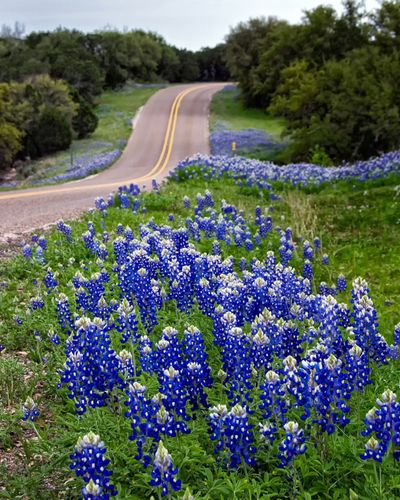Successful roadside landscaping is better achieved by adhering to some of the following roadside planting tips.
About Landscaping Along Roads
As you travel across the highways of the United States, there is plenty to note and admire regarding roadside plants. Landscaping next to roads is done primarily when nearing a city or town while the remainder of the plants along roadsides are native plants of the region. Planting with natives is an excellent idea when selecting plants for roadside landscaping. While native plants may be ornamental, they are not chosen as roadside plants for their beauty but rather for their ease of maintenance, adaptability, and hardiness. Growing native perennial plants near roads gives them a better chance at surviving often punishing conditions that growing near a roadway may offer. Native plants also have the benefit of hosting habitats for native animals and insects.
Tips for Growing Plants Near Roadsides
Perhaps you’re looking to create an attractive mailbox garden or wish to add more curb appeal near the roadside portion of your landscape. Several conditions need to be considered when growing plants near roads. First off, the site will generally be inhospitable. Since the soil near the road has been disturbed during construction, it may be compacted with very little topsoil. The wind is often an issue due to the topography of the road and a lack of vegetation. Plants will be exposed to vehicle emissions as well as salt spray during winter. Sites along a roadway may or may not be irrigated, so choosing plants that are drought-hardy is a must. Often, landscaping along roads is made up of trees and shrubs rather than grass or herbaceous ornamental plantings. This is because trees and shrubs will generally be a long-term investment with lower maintenance costs. Soil may need to be addressed by loosening and restoring the topsoil. If you’re not interested in doing this project yourself, choose a landscape designer that not only knows what plants will thrive in the region but also how roadside planting conditions may affect certain species. Decide on the type of planting you wish to implement. Will it include irrigation? What about maintenance? Is there a budget for maintenance and, if so, how much? Will pruning or fertilization need to be implemented? What about weed control? Consider the cost and benefits of laying down a weed barrier. Is there any reason to be concerned about drainage? There are many things to consider when creating a roadside landscape. Research and seek out the assistance of a landscape professional who specializes in this type of landscaping and/or contact your state’s transportation department as well as the local extension office for assistance.
